Personal tools
News from ICTP 91 - Dateline

The 1999 Nobel Laureates in physics and chemistry are no strangers to ICTP.
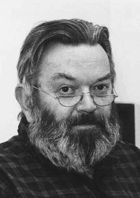
Dutch-born Martinus J.G. Veltman, co-recipient of the Nobel Prize in physics, was awarded the ICTP Dirac Medal in 1996.
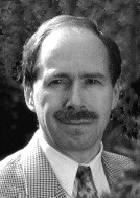
Gerardus 't Hooft, a one-time student of Veltman who shared the prize with his mentor, took part in the ICTP Symposium on Perspectives in Particle Physics in 1986 and lectured at the Spring School and Workshop on String Theory, Gauge Theory and Quantum Gravity in 1993. Veltman, professor emeritus at the University of Michigan (USA) and 't Hooft, professor at the University of Utrecht (The Netherlands), were honoured for their discovery of a mathematical concept that has advanced our understanding of theoretical particle physics.
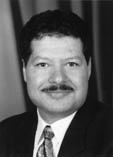
Egyptian-born Ahmed H. Zewail, winner of the 1999 Nobel Prize in chemistry, lectured at the ICTP College on Lasers, Atomic and Molecular Physics in 1985. He is also a fellow of the Third World Academy of Sciences (TWAS). Founded by Abdus Salam in 1983, the TWAS secretariat is headquartered in the Fermi Building on the ICTP campus. Zewail, who was honoured for his development of a laser technique capable of detecting the behaviour of atoms during a chemical reaction, is a professor at California Institute of Technology (USA). He is the first Arab and second Muslim scientist (Abdus Salam was the first) to win the Nobel Prize.
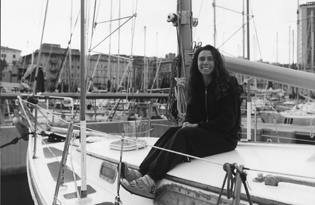
Since the Centre's opening in 1964, scientists eager to participate in the Centre's research and training activities have journeyed to ICTP in a variety of ways.
Most of our visitors have come by plane. Others, however, have chosen more unusual modes of transportation. In the 1970s, for example, several Chinese students boarded the Transiberian Express for a week-long, 12,000-kilometre train ride to Trieste. More recently, several Moroccan students crossed the Strait of Gibraltar by ferry and then purchased a bus ticket in southern Spain for a 2500-kilometre ride to Northern Italy.
But no Centre scientist has ever sailed the high seas to come to the Centre. That is, no scientist until Sandra Liliana Sautú, a visiting researcher with the ICTP High Energy Physics Group.
Sautú, a researcher at the Centro de Pesquisas Físicas and an Associate Professor of physics at Universidade Federal do Rio de Janeiro, left port in Rio de Janeiro on March 15. On the way, she and her friend Axel Julie set anchor in Recife, Brazil; Antigua; the Azores; Cádiz, Spain; and Sardinia and Sicily, Italy, before arriving in Trieste on 27 August.
Her sailboat, which measures 8 metres in length, is now docked at a local yacht club near Piazza Unità, which is the main square in Trieste. Sautú plans to call the boat her home throughout her stay in Trieste. In fact, the boat has been her home for more than 2 years, ever since she purchased it from a fellow-sailor in Rio de Janeiro. "I've added a small heater to get through the winter," she notes.
Sautú loves the sea's tranquillity as well as the challenges and sense of personal satisfaction it affords. "Sailing is an experience that brings you close to nature," she notes. "When I gaze at the horizon from the bow of my ship, the sea and wind engulf me. There's nothing else and nothing else is needed. That's why the ocean has become such a focal point of my life."
While at the Centre, Sautú will conduct research in astrophysics and cosmology. Then, come early spring, she will set sail again, returning to Brazil the same way she came: swept along by the ocean winds of the Atlantic.
B. Ananthanarayan, assistant professor of physics at the Centre for Theoretical Studies (CTS), Indian Institute of Science (IISc), Bangalore, India, recently wrote a brief note to express his thanks to the ICTP-TWAS Donation Programme. "At the Centre for Theoretical Studies we are maintaining a departmental library primarily in the areas of particle physics, field theory and mathematical physics. We acknowledge the kind assistance of the ICTP-TWAS Donation Programme in handling shipping costs for journals given by libraries in Switzerland, France, Belgium and elsewhere, which has enabled CTS to expand its journal collection in these areas. ICTP Associate Members visiting Bangalore under the ICTP-IISc-JNCASR (Jawaharlal Nehru Centre for Advanced Scientific Research) Associateship Programme, and others, may wish to visit CTS and its departmental library and benefit from the resources available here."
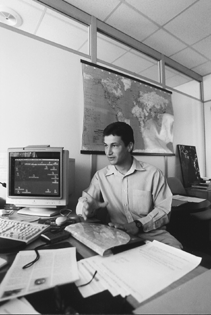
"It all began with an eye-catching research position advertised on the internet: "Work with levitating frogs." That's how former ICTP Diploma student Marius Boamfa explains his first encounter with 'frogs in flight.'
Romanian-born Boamfa, who graduated from the Diploma Programme in 1997, admits that the advertisement initially made him laugh. "But on closer reading," he says, "I realised that the position could be challenging."
His curiosity landed him at the University of Nijmegen's High Field Magnet Laboratory in the Netherlands. He's been there for the past two years working on a doctorate in physics, which he expects to receive in 2002.
Boamfa acknowledges that frog levitation does have 'entertainment value.' But he quickly adds that the research is serious. "It not only sheds light on the behaviour of organisms and materials subject to zero gravity but holds promise for practical applications in scientific areas ranging from astrophysics to plant biology."
For example, Boamfa notes that diamagnetism--an energy-free magnetic force created by the internal motion of atoms--may help astrophysicists better understand the effects of zero gravity on living organisms. "Until now, such experiments have taken place in space crafts orbiting above the atmosphere," he explains. "Research costs exceed US$1 million an hour and there's a waiting list of four years. We can reproduce similar conditions in our laboratory at a cost of about US$1500 a day and there's no waiting list at all."
The conditions that make levitation possible are created through an intense magnetic field some 400,000 times more powerful than the magnetic field found on Earth. The diameter of the tube in which these forces operate is just 3 centimetres. Yet that hasn't prevented Boamfa and his colleagues from levitating a wide range of animals, plants and objects--frogs, flies, strawberries, hazelnuts, even small slices of pizza.
"The most beautiful object of all has been a globule of water, which remains perfectly spherical and perfectly still. It's like observing a three-dimensional rain drop suspended in mid air."
The entertaining aspects of his research have captured the attention of international media. Since Boamfa's arrival, CNN and BBC have done segments on the laboratory's flying frogs and levitating pizza. The publicity has helped the laboratory secure funding for the construction of a new high magnetic field facility that will rank among the best in the world.
"As far as we can tell, the magnetism does no harm to the frog," Boamfa notes. "As soon as the magnetic force dissipates the frog goes about its business as if nothing has happened."
And that's the way Boamfa feels about his research as well: He is delighted to have pursued what has become an unusual research opportunity, and is now anxious to build a career in physics based in part on the knowledge and experience he has gained from his strange encounter with 'frogs in flight.'
Iran Opens Scientific Meetings Office
Iran's Ministry of Culture and Higher Education has opened an International Scientific Meetings Office (ISMO). The Office represents in part the outgrowth of a memorandum of agreement that the ministry signed with ICTP in December 1998. ISMO's main responsibility will be to organise international and regional scientific research and training activities in the basic and applied sciences. Such activities will range from two- or three-day workshops to six-week schools. The Office is located in the Department of Physics at Sharif University of Technology in Tehran. ISMO's day-to-day responsibilities will be directed by Reza Mansouri, professor of physics at the university, while the institute's broad direction will be approved by a scientific committee. The following research topics are under consideration for 2000: dynamical systems and turbulence; electrostatics and its applications; fiber optics and optical devices; and training for writing proposals to international scientific centres. Additional information about ISMO may be obtained via e-mail: ismo@physics.sharif.ac.ir, or phone/fax: +98 21 6022711.
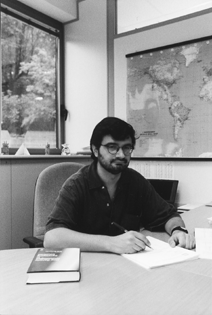
Daniel Domínguez, professor of physics from Instituto Balseiro in Bariloche, Argentina, has been awarded the 1999 ICTP Prize, which is being given in the field of condensed matter theory. Domínguez has been honoured for his studies of vortex dynamics in superconducting materials and Josephson junction arrays. His contributions have made him one of the leading international experts working in these cutting-edge fields. In addition to his professorship at the Institute, Domínguez is a staff member of the solid state theory group at Centro Atómico Bariloche and a researcher with Consejo Nacional de Investigaciones Científicas y Técnicas (CONICET) in Argentina. He was a post doc at the Centre from 1992 to 1994 and is now an ICTP Associate Member. The 1999 ICTP Prize is named in honour of Stig Lundqvist, a long-time supporter of ICTP who helped launch ICTP's condensed matter activities in the 1970s and sub-sequently served as the chairman of the Centre's Scientific Council from 1983 to 1992. The awards ceremony will take place in the summer 2000.